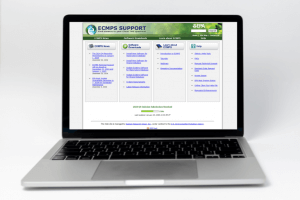Engineering Services
Configuring a Data Acquisition System (DAS) is a complicated process, with federal, state, and local regulations constantly evolving and requiring system-wide changes. However, our engineering team has configured thousands of Data Acquisition Systems across the country and provides efficient and precise engineering assistance. Our professionals can configure our DAS software to meet your facility’s exact requirements, ensure it is updated, aligned with the latest regulations, and integrated with your other resources.
While software interfaces like StackVision’s StackStudio provide users with an intuitive interface to make changes to their DAS, if you are new to the software, unsure about regulatory directives, or unable to allocate staff resources, our expert Engineering Services team can help. You can schedule Engineering projects on a time and materials basis, choose from one of our fixed-price offerings, or purchase prepaid Engineering hours.
8864 Data Controller Expand & Update
The Expand and Update Engineering service provides a three-phase process to expand storage capacity and brings your 8864 Data Controller up to date.
DAS Compliance Review
Permits can be unclear, personnel move on, and rules change over time. During the DAS Compliance Review process, the Engineering team determines where your configuration is out of alignment and works with you to bring it back into compliance with the permit.
Prepaid Hours
Need quick access to the Engineering team? Get quick one-on-one help without a PO or quote with prepaid hours.
Private Training
Learn from an ESC Spectrum engineer using your DAS system with Private Training.
Reconciliation – Capture the differences in the 8864 Data Controller and the configuration stored at the server.
Update Firmware – Upgrade the 8864 Data Controller firmware to the latest general release available.
Expand Storage – Make the configuration changes necessary to increase channel storage.
Permit Review – Review Continuous Emission Monitoring (CEM) compliance requirements as detailed by ESC Spectrum, including the permit and feedback.
DAS Permit Analysis – A thorough Engineering Design Review based on an approved compliance review.
Configuration Updates – Implementation of a customer-prioritized list of recommended changes to monitoring, calculating, and reporting.
Discovery – Work with an ESC Spectrum engineer to develop a prioritized itinerary.
Training – Receive extensive training based on your individual needs.
Documentation – The engineer will provide an itemized list of suggested improvements plus any necessary proposal or case creations after training.
Given recent updates to the Mercury Air Toxic Standards (MATS), your facility may be dealing with updated Particulate Matter (PM) CEMS requirements. This rule took effect on July 8, 2024, and the timeline for compliance is 3 years (with an option for a one-year extension). Your DAS will likely require configuration changes when adding PM CEMs. Learn more about PM CEMS and PS-11 Compliance here.
From The Source Blog

Minimizing CEMS Downtime: Maintenance & Upgrade Strategies
CEMS downtime can lead to compliance risks and operational inefficiencies. This guide covers essential strategies for maintaining hardware, upgrading systems, and managing spare parts to minimize disruptions. Field Service Technician V and SME John Cutaia shares how to keep your Continuous Emissions Monitoring System (CEMS) operating efficiently with proactive maintenance and timely upgrades.

Why It Pays to Upgrade Your Data Acquisition System
Upgrading your Data Acquisition System (DAS) isn’t just about staying current—it’s about improving efficiency, ensuring compliance, and reducing costs. Whether you’re facing outdated technology, new regulations, or inefficiencies, the right DAS can streamline operations and enhance data visibility. Learn the key signs that it’s time for an upgrade and how a modern system can maximize your ROI.

ECMPS 2.0 Update: Key Information You Need to Know
Learn about the latest ECMPS 2.0 updates from the EPA, key changes, and how ESC Spectrum is helping you stay prepared.
